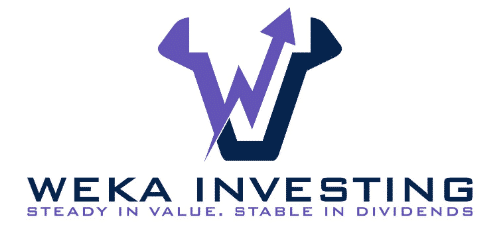We're embracing a new frontier by leveraging a margin account instead of whole life insurance for the infinite banking process. This approach amplifies our returns through strategic borrowing against invested securities. We're curious about the balance—how much we can borrow, how to manage the variable interest, and the interplay with our overall financial strategy. It's a dynamic model, offering immediate fund access without premium payments, diversifying our investments further. However, we're also wary of the risks—margin calls and interest fluctuations. As we navigate these complexities, we gain insights on crafting a solid risk management plan, revealing new strategies for wealth building.
Key Takeaways
- Infinite banking with a margin account involves borrowing against invested securities instead of using a whole life insurance policy's cash value.
- It requires opening a margin account with a brokerage firm, understanding the terms, and managing borrowed funds strategically.
- This method offers immediate access to funds for investment opportunities without the need for premium payments typical of whole life insurance.
- Investors must maintain sufficient equity in the account to avoid margin calls and manage the risks associated with variable interest rates.
- Unlike whole life insurance, using a margin account for infinite banking lacks tax advantages but allows for greater investment flexibility and diversification.
Understanding Infinite Banking
To truly understand the Infinite Banking concept, we must explore how leveraging a margin account, instead of depending on whole life insurance, can open up new pathways to financial growth and autonomy. Traditionally, Infinite Banking has been synonymous with using whole life insurance policies as a financial tool, where the cash value within the policy serves as a reservoir for borrowing, investing, and wealth-building. However, we're now witnessing a shift where a margin account offers a compelling alternative, providing a different dimension of financial flexibility and potential.
Utilizing a margin account for Infinite Banking involves borrowing against securities rather than the cash value of a life insurance policy. This shift not only alters the foundation of borrowing but also introduces a variable interest rate environment, which can significantly impact our strategic financial planning. The interest rates on loans obtained through margin accounts can be more volatile than those associated with whole life insurance policies, requiring us to be more vigilant and adaptive in managing our finances.
Moreover, the securities used as collateral in a margin account introduce an additional layer of risks, including the possibility of margin calls in a declining market. This necessitates a deep understanding of market dynamics and the implications of leveraging investments in this manner. As we navigate through these complexities, it's imperative to weigh the benefits of potentially higher returns against the increased risks, ensuring that our approach to Infinite Banking aligns with our risk tolerance and financial goals.
In essence, replacing whole life insurance with a margin account in the Infinite Banking process invites us to rethink our strategies for financial autonomy and growth. It challenges us to balance the pursuit of higher returns with the management of inherent risks, fostering a community of informed and strategic financial thinkers.
Margin Account Basics

Exploring the fundamentals of margin accounts, we'll uncover how they enable investors to leverage their capital in pursuit of amplified returns, setting the stage for a nuanced understanding of their role in the Infinite Banking process. Unlike a whole life insurance policy, which serves as a cornerstone for the traditional infinite banking concept with its cash value growth and potential for borrowing against it, margin accounts introduce an alternative avenue. They allow for borrowing against invested securities, presenting a dynamic yet risk-laden path to enhancing cash flow and achieving a superior rate of return.
Delving deeper, we find that the amount one can borrow in a margin account hinges on one's equity in the account and the brokerage firm's lending criteria. Here, the strategic interplay between leveraging for higher returns and managing the accruing interest on borrowed funds becomes critical. This borrowing mechanism amplifies both potential gains and losses, underscoring the importance of a well-considered strategy and continuous oversight.
Considering the inherent risks and the fluctuating nature of market investments, it's clear why engaging a knowledgeable financial advisor becomes indispensable. They can offer insights into aligning margin account usage with one's broader financial goals, including those inspired by the infinite banking concept. While margin accounts don't offer the life insurance benefits or guaranteed cash value growth associated with a whole life policy, they open up a world of financial maneuverability and potential wealth accumulation, provided one navigates the complexities with acumen and caution.
Infinite Banking With Margin Account
We'll now explore how utilizing a margin account can redefine the Infinite Banking concept, analyzing the strategic benefits and inherent risks this approach entails. Traditionally, Infinite Banking involves using life insurance, particularly whole life or other forms of permanent life insurance policies, as a personal bank. This method focuses on the cash value within these policies, which can serve as an emergency fund or line of credit. However, shifting towards a margin account introduces a dynamic way to approach personal finance, diverging from the reliance on cash value life insurance.
Here's why this shift could be a game-changer:
- Flexibility: Unlike whole life insurance policies, margin accounts aren't tied to the long-term commitments and rigid structures of life insurance products. This allows for more agile financial moves.
- Potential for Higher Returns: Margin accounts offer the chance to leverage investments for potentially higher gains, beyond the steady but often lower returns associated with cash value life insurance.
- Immediate Access: Accessing funds from a margin account can be quicker than borrowing against the cash value of a life insurance policy, providing a more immediate solution to financial needs.
- No Premium Payments: Using a margin account for Infinite Banking sidesteps the necessity of paying insurance premiums, potentially freeing up cash for other investments or expenses.
- Diversification: It enables investment in a wider range of assets beyond the life insurance sphere, promoting a diversified portfolio.
Adopting a margin account in the world of Infinite Banking certainly invites us to rethink traditional personal finance strategies, urging a closer examination of our risk tolerance and investment goals.
Risks Involved in Margin Accounts

While the benefits of using a margin account for Infinite Banking highlight its appeal, it's equally important to understand the risks, such as the potential for margin calls and amplified losses, that accompany this strategy. When we borrow money from a brokerage firm to invest in securities, we're essentially leveraging our existing assets as collateral. This can greatly amplify our gains, but it also means our losses could be just as sizable.
The nature of margin accounts introduces a level of volatility and risk not found in cash transactions. If the market takes a downturn and the value of our investments falls below a certain threshold, we could face margin calls. This would require us to deposit additional funds or sell off assets at possibly the worst time—when their value is low. Such scenarios emphasize the importance of having a solid risk management plan in place.
Furthermore, the fluctuating interest rates on borrowed funds add another layer of complexity. These rates can impact the cost of borrowing, potentially eating into our investment returns. It's crucial for us to keep an eye on these rates and understand how they affect our overall financial strategy.
In strategically and inquisitively engaging the volatile waters of margin accounts, we must be deliberate and attentive. It's not just about the potential for higher returns but understanding and mitigating the risks involved. By carefully monitoring our investments and being prepared to act when necessary, we can better manage the inherent risks of leveraging our investments through margin accounts. This approach to risk management is crucial for anyone considering this path to Infinite Banking.
Comparison: Margin Account Vs Whole Life Insurance

How does utilizing a margin account for infinite banking compare to the traditional strategy of overfunding a whole life insurance policy? Let's explore the differences, weighing the benefits and drawbacks of each approach to understand their role in wealth building.
- Borrowing Flexibility vs. Stability:
Margin accounts offer the flexibility to borrow against investments with the potential for high returns. However, they carry a risk of margin calls during market downturns. In contrast, overfunding a whole life policy provides stable cash value growth and a death benefit, albeit with less flexibility.
- Interest Rate Fluctuations vs. Predictability:
The interest rate on borrowed funds from a margin account can vary, potentially affecting the cost of borrowing. Whole life insurance policies, on the other hand, often have fixed borrowing rates, offering predictability in planning.
- Market Risks vs. Guaranteed Growth:
Investing through a margin account exposes one to market risks, including the possibility of significant losses. Conversely, a whole life policy offers guaranteed cash value growth, with less immediate risk.
- Tax Advantages:
Whole life insurance policies have tax advantages, including tax-free withdrawals under certain conditions, which margin accounts lack. This makes life insurance a more attractive option for long-term tax planning.
- Wealth Building Strategies:
Using a margin account can be a high-risk, high-reward strategy for wealth building, suitable for those with a higher risk tolerance. Whole life insurance provides a more conservative, long-term wealth building approach with added benefits like a death benefit.
Analyzing these aspects helps us understand that while margin accounts offer higher potential returns, they come with increased risks. Whole life insurance, while less flexible, provides stability and predictability, essential for long-term financial security.
Steps to Implement Infinite Banking

To successfully navigate the process of implementing Infinite Banking using a margin account, it's important to first understand the foundational steps involved. We're embarking on a journey that diverges from the traditional path of whole life insurance policies, venturing into a domain where securities and equity play pivotal roles. Let's dissect the process strategically, keeping our collective goal of wealth maximization in focus.
| Step | Description |
|---|---|
| 1. Evaluate | Assess your financial situation to determine if leveraging a margin account aligns with your risk tolerance and investment goals. |
| 2. Open a Margin Account | Choose a brokerage firm and open a margin account, understanding the terms, especially the interest rate on borrowed funds. |
| 3. Borrowing Strategy | Plan your borrowing strategy. Consider how much to borrow against the securities in your account, keeping in mind the need to maintain sufficient equity to avoid margin calls. |
| 4. Invest Wisely | Invest the borrowed funds in assets that have the potential to generate returns higher than the borrowing cost. |
Implementing Infinite Banking through a margin account invites us to scrutinize the nuances of borrowing, interest rates, and the dynamic relationship between cash value and securities. It's a method that demands we stay informed and agile, ready to adapt our strategies in response to market fluctuations. Overfunding a margin account, akin to the cash value in whole life insurance, becomes a strategic move to enhance our financial resilience. As we navigate this process, our collective inquisitiveness compels us to continuously evaluate the equity within our securities, ensuring our approach to Infinite Banking remains robust and aligned with our aspirations for financial freedom.
Benefits of Infinite Banking

Exploring the benefits of Infinite Banking through a margin account, we uncover the potential for not only accessing funds for investment without the constraints of whole life insurance but also for leveraging market opportunities to enhance our financial growth. This approach invites us to rethink traditional financial strategies and embrace a method that offers both flexibility and potential for higher returns.
Let's explore into some specific advantages:
- Access to Funds: Unlike whole life insurance, a margin account provides immediate access to funds, allowing us to capitalize on investment opportunities as they arise.
- Leverage for Higher Returns: By using borrowed funds to invest, we can potentially amplify our returns, understanding that there's a balance between risks and rewards.
- Diversification: Margin loans can be strategically used to diversify our investment portfolios, reducing our overall risk while exploring various market opportunities.
- Flexibility: Infinite banking with a margin account offers flexibility in repayment terms and investment choices, unlike the more rigid structure of whole life insurance policies.
- Market Opportunities: The ability to quickly leverage and invest means we're better positioned to take advantage of market opportunities, aiming for higher returns.
As we navigate through the intricacies of infinite banking with a margin account, it's crucial we weigh these benefits against the inherent risks. Understanding both the potential for higher returns and the complexities of leveraging investments allows us to strategically plan our financial growth. This approach to infinite banking challenges us to think analytically and strategically, keeping in mind the balance between leveraging for growth and managing the associated risks.
Potential Drawbacks of Infinite Banking

While the potential for higher returns is enticing, we must also consider the inherent risks that come with using margin accounts for infinite banking. Unlike the relatively stable domain of life insurance, where cash value can be a source of low-interest borrowing, the volatility of a margin account introduces a level of risk we can't overlook. Let's explore further into these aspects to understand the full picture.
Firstly, the interest rate on margin loans is variable and can be significantly higher than rates tied to life insurance policies. This factor alone can erode the potential gains we're pursuing, especially in a rising interest rate environment. It's a variable we need to keep a close eye on, as it directly impacts our bottom line.
Moreover, margin accounts require collateral, usually in the form of securities held within the account. If the market takes a downturn, we may face margin calls, compelling us to add more funds or sell holdings at possibly inconvenient times. This liquidity risk is a crucial consideration, as it could force our hand in ways that aren't aligned with our strategic financial goals.
Another point we can't overlook is the lack of tax advantages that come with life insurance policies. The cash value growth and death benefits of life insurance offer tax-free advantages that a margin account can't match. It's a significant difference that could impact our overall financial strategy and net worth over time.
In essence, while infinite banking with a margin account opens doors to potentially higher returns, the associated risks and lack of certain benefits, such as guaranteed growth and tax advantages, highlight the need for a cautious and well-thought-out approach.
Frequently Asked Questions
Can You Do Infinite Banking Without Life Insurance?
Yes, we can explore infinite banking without depending on life insurance by using a margin account. This strategy allows us to borrow against our investments rather than a life policy, offering a different avenue to potentially increase our wealth.
It's important we comprehend the risks and benefits of this approach, as it carries its own set of challenges, including market volatility and the possibility of margin calls. Let's carefully weigh our options together.
What Are the Pitfalls of Infinite Banking?
We're exploring the pitfalls of infinite banking, a concept that's caught the attention of many. Surprisingly, 70% of individuals jump into it without fully understanding the risks.
We're curious, strategic thinkers, aiming to dissect these complexities. As a community seeking empowerment, it's crucial we recognize the high costs and potential for loss.
What Are the Cons of Ibc?
We're exploring the downsides of the Infinite Banking Concept (IBC), and it's clear there are several aspects to ponder.
The use of margin accounts introduces higher risks, including possible significant losses if investments fall.
We're also wary of the variable interest rates and strict requirements that could limit accessibility.
Without the tax advantages and guarantees provided by whole life insurance, we're questioning if this strategy truly fits our financial goals and risk tolerance.
Can You Do Infinite Banking With 401k?
We're treading on thin ice asking if we can do infinite banking with our 401(k)s. It's like trying to fit a square peg in a round hole—401(k)s just aren't built for this. They're for nest eggs, not financial gymnastics.
Diving into this without considering the penalties and taxes is like jumping without a parachute. We're in this together, searching for smart, secure ways to grow our wealth without risking our futures.
Conclusion
In our pursuit of financial freedom, delving into the domain of margin accounts for Infinite Banking is akin to traversing a vast ocean with a more potent yet unpredictable ship. While the promise of swifter travels and greater treasures is enticing, the turbulent seas of market volatility remind us of the delicate balance we must maintain.
With a historical data point revealing that over 80% of day traders lose money over time, it's a stark reminder that this journey requires not just a map, but also a seasoned captain's wisdom. As we plot this course, our eyes are wide open to the potential rewards and risks, driven by a strategic approach and an inquisitive spirit, ever mindful of the need to steer carefully through these turbulent financial waters.

Dr. Lincoln C. Wood teaches at the University of Otago in New Zealand. He is an avid investor and educator. He loves cash flow, income, and dividends when investing. He likes to buy undervalued companies with strong advantages and earnings growth.






